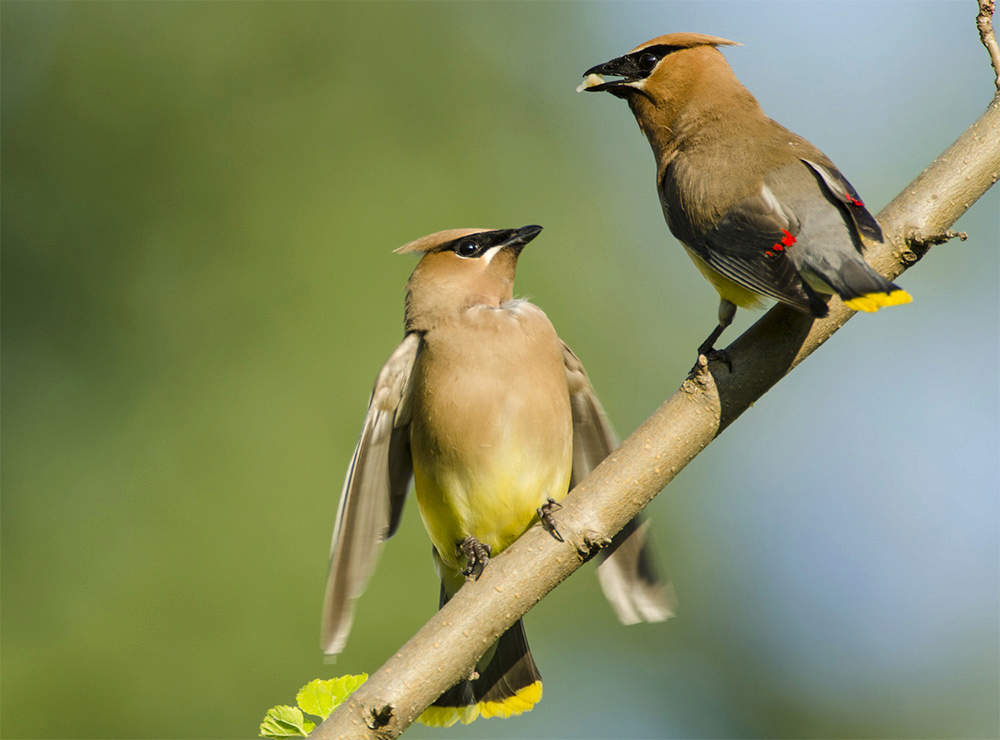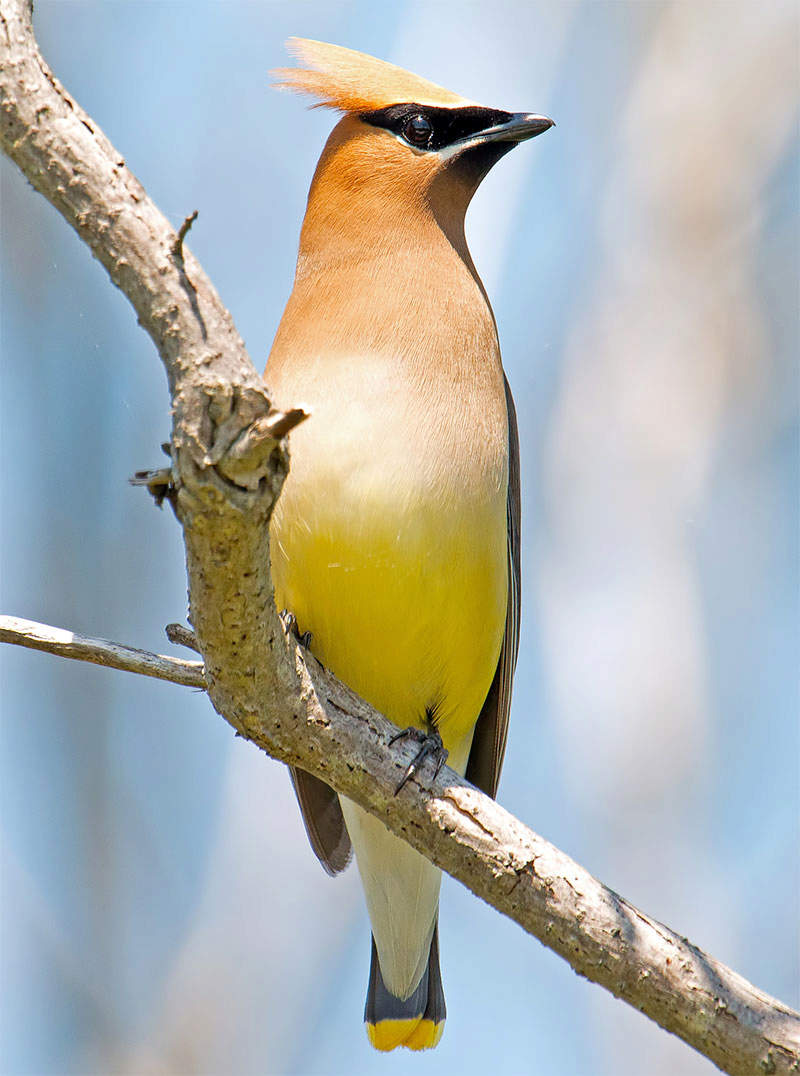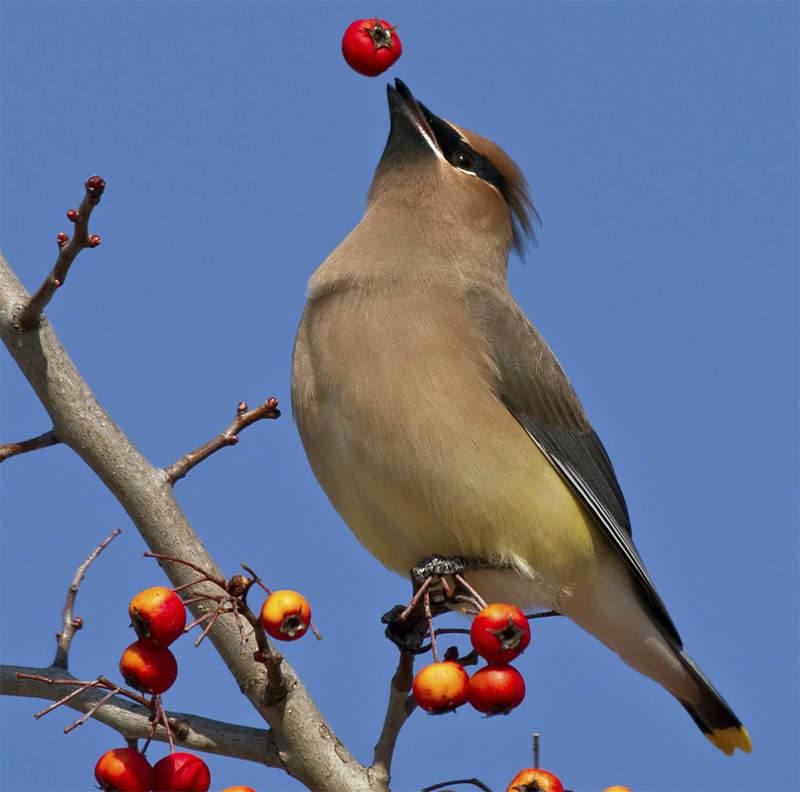Featured Birds: Cedar Waxwings
Cedar Waxwings have plumage so sleek it doesn’t even look like it’s made up of feathers. Those silky feathers are elegant soft browns and yellows, with just the right accents—black facial mask, brilliant dabs of red on the tips of the secondary wing feathers, and each tail feather ending in intense lemon yellow. Young Cedar Waxwings look fairly silky, but are streaked beneath and their crest a bit rounder and less elegant.
The red wingtips, which give waxwings their name, vary in number. Young, streaked birds usually lack them entirely. Adults have 2–9 red tips per wing. Males average more, but in both sexes, the number increases as birds get older. These colorful adornments probably help birds seeking a mate within a flock to identify the most experienced potential partners. Of course, the most experienced birds know to find an experienced mate, so waxwings tend to end up with pairs made up of fairly similarly aged birds. The oldest, most experienced pairs nest earlier and raise more young than younger pairs.

The yellow band at the end of the tail averages wider in males than females. In a few birds, the tail band is orange rather than yellow. This odd variation was not observed before the early 1960s, and the number of birds with orange instead of yellow has increased since then, probably as more and more birds have found and fed on introduced Morrow’s honeysuckle berries, which contain the same pigment found in those orange feathers.
Cedar Waxwings lead a double life. At times they seem lazy, moseying about in fruit trees and berry bushes, pigging out on succulent, sweet berries, swallowing them whole. Other times, they’re active flycatchers, fluttering forth from bare tree branches to snap up insects on the wing. Being so adept at getting food both ways ensures that they get enough carbohydrates and vitamins from the fruits and enough protein from the insects.

Many Cedar Waxwings spend the winter in Central America and Mexico, and they don’t return to their breeding grounds until later than many migrants, probably because they must wait until more fruit is available again.
Cedar Waxwings feed their nestlings a lot of fruit. This ideal diet for baby waxwings doesn’t have nearly enough protein for growing cowbirds. When a cowbird does lay its egg in a waxwing nest, the young cowbird usually dies within several days from malnutrition.

Whether chasing bugs or lazily dining on fruit, Cedar Waxwings are very sociable. Feeding flocks can include several birds or hundreds, and they seldom squabble even while eating. Unlike most flocking birds, Cedar Waxwings don’t seem very territorial, even during the nesting season. But they do steal nesting materials from one another’s nests, and so the one time they do act aggressively toward one another is in defense of their own nest.
No one knows if Cedar Waxwing pairs stay together from one year to the next, because they don’t seem to return to the same area year after year so ornithologists can track them.

After berries stop growing, the sugars in them slowly start to ferment, turning to alcohol and other toxic substances. When waxwings feed on fermented berries, they get intoxicated, becoming more uncoordinated and are slower in reacting to danger. In this state, they are often killed in collisions with windows and cars. For this reason, people who understand how vulnerable waxwings and robins are plant berry bushes away from windows and roads.





